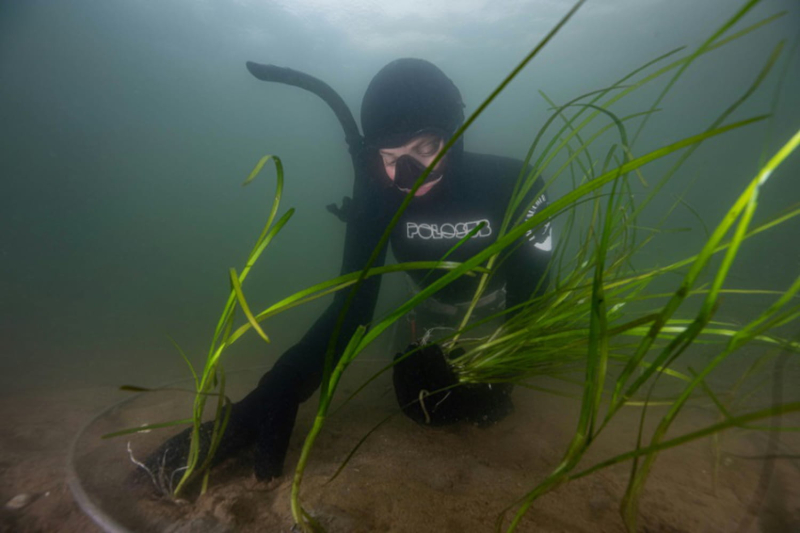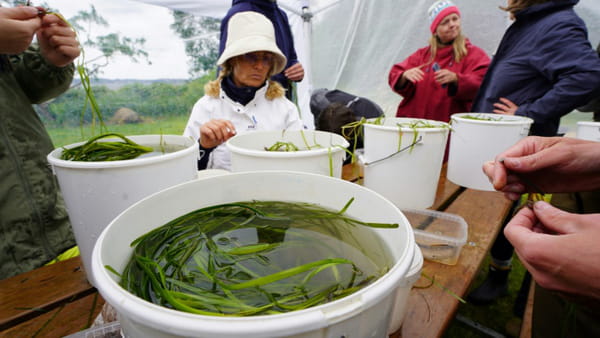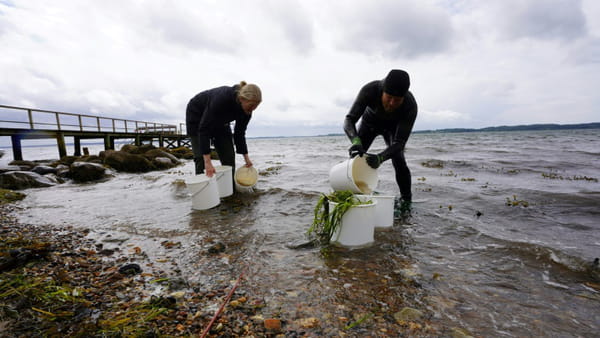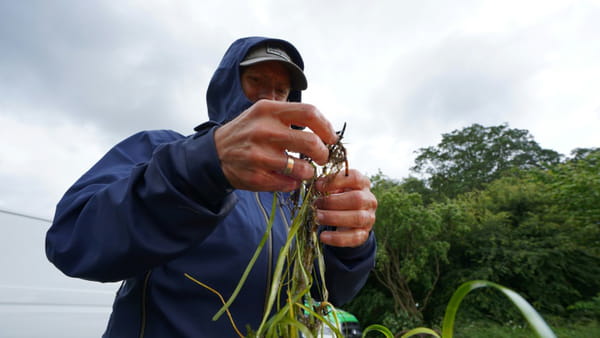Under a tent along a fjord in western Denmark, volunteers and scientists are busy working on the problem. prepare seagrass plants before transferring them to the water to restore the ecosystem of this heavily impacted inlet. by deoxygenation. In the Scandinavian country, which enjoys a good environmental reputation, 7,500 km2, or 17% of the total area, are affected by the problem, according to the Danish Environment Agency which classified only five of 109 coastal areas in “good ecological status”. Deprived of oxygen, marine fauna and flora disappear. In Vejle, an underwater surveillance camera installed by the municipality detected only one fish in 70 hours. In Denmark where more than 60% of the surface area of the country is devoted to agriculture, one of the highest proportions in the world, the alarm bells continue to ring. In 2022, a report from the University of Southern Denmark highlighted the “poor environmental state” of this 22 km long fjord, due to the high presence of nitrogen from fertilizers “the majority of which comes from diffuse runoff from cultivated areas”. And when the mercury rises, the problems accumulate. “We had a very hot summer in 2023, which led to a huge depletion of oxygen,” Mads Fjeldsoe Christensen, a biologist employed by the town hall, confirms to AFP. “It was quite serious, we saw a lot of dead fish.” To alleviate this ecological drama, scientists and the municipality decided in 2018 to reintroduce herbs marine environments, which helps restore the underwater environment. Volunteers prepare kelp shoots on the shores of Vejle Fjord, Denmark, June 9, 2024 © AFP – James BROOKS In areas that are still thriving, scientists collect herbs, then, on land, volunteers wrap the wavy shoots around a degradable nail, so that divers can then easily attach them to the bottom of the Wed This is a first step to improve the state of the fjord whose ecosystem has collapsed in recent years. “Eelgrass (or marine kelp, Editor's note) is where all the fish grow, it's like a kindergarten for them. If you don't have eelgrass, there's just no space for the fish population to grow.” , explains Mr. Fjeldsoe Christensen. – Return of aquatic life – Since the start of the project, more than 100,000 herbs have been planted across six hectares of seabed. Volunteers prepare eelgrass seedlings to be planted in Vejle Fjord, Denmark, June 9, 2024 © AFP – James BROOKS In places, divers are now rediscovering aquatic life, with crabs and fish. “We see the effects of nature restoration,” says biologist Timi Banke, from the University of Southern Denmark (SDU), who is participating in the project . In April, however, Greenpeace organized the open-air funeral in the fjord to draw attention to the poor health of the country's coastal waters. “It is in poor condition, that’s why we are doing something, but it is not dead,” assures the scientist, who welcomes the mobilization of NGOs and locals. In Vejle, around fifty volunteers came to lend a hand to the scientific teams despite very gloomy weather. A volunteer prepares eelgrass seedlings to be planted in Vejle Fjord, Denmark, June 9, 2024 © AFP – James BROOKS On World Oceans Day, June 8, the think-tank “Taenketanken Hav” organized seagrass planting operations at 32 sites across the country. “By planting eelgrass, we focus on restoring nature, but that doesn't mean we should forget that we also need to reduce nutrient emissions in Danish waters” with degraded quality, explains the general director of the NGO Liselotte Hohwy Stokholm, on her site. All rights of reproduction and representation reserved. © (2024) Agence France-Presse




